11 Plants With Year-Round Flowers – Enjoy Gardening in Full Bloom

This post follows our research editorial guidelines.

When it comes to gardening, there’s nothing quite as satisfying as seeing your plants in full bloom all year round. Imagine stepping outside to a garden bursting with color and fragrance, no matter what the season.
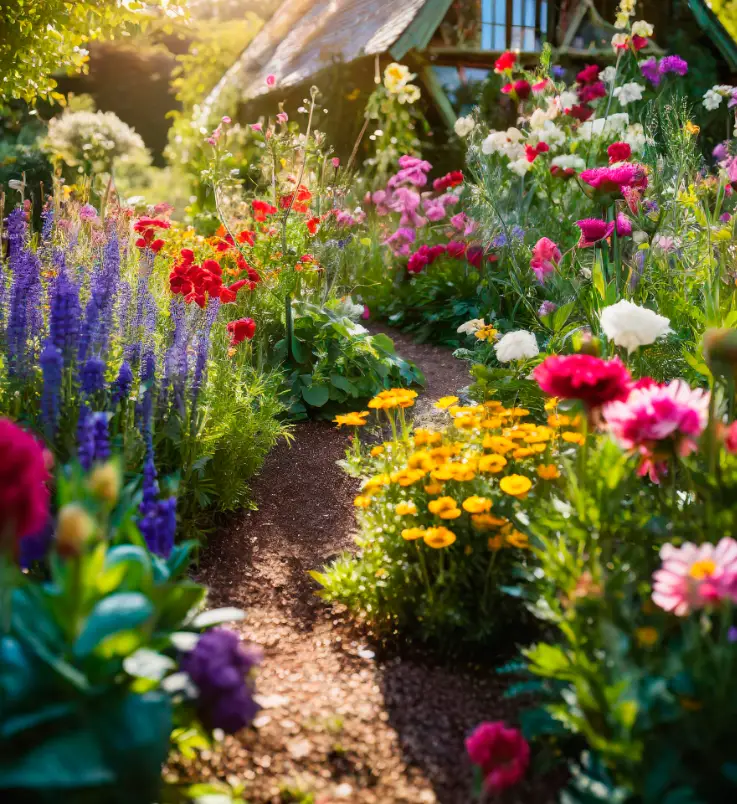
Quickly find the flower your looking for:
If this sounds like a dream come true, you’ll be pleased to know that it is possible with the right selection of plants. In this post, we’re going to take a look at 11 plants that will keep your garden looking beautiful and vibrant all year long, thanks to their year-round flowers. Some are low growing perennials, while others can grow mover 10 feet tall.
So, grab your gardening gloves and get ready to be inspired!
1. Coneflower (Echinacea)
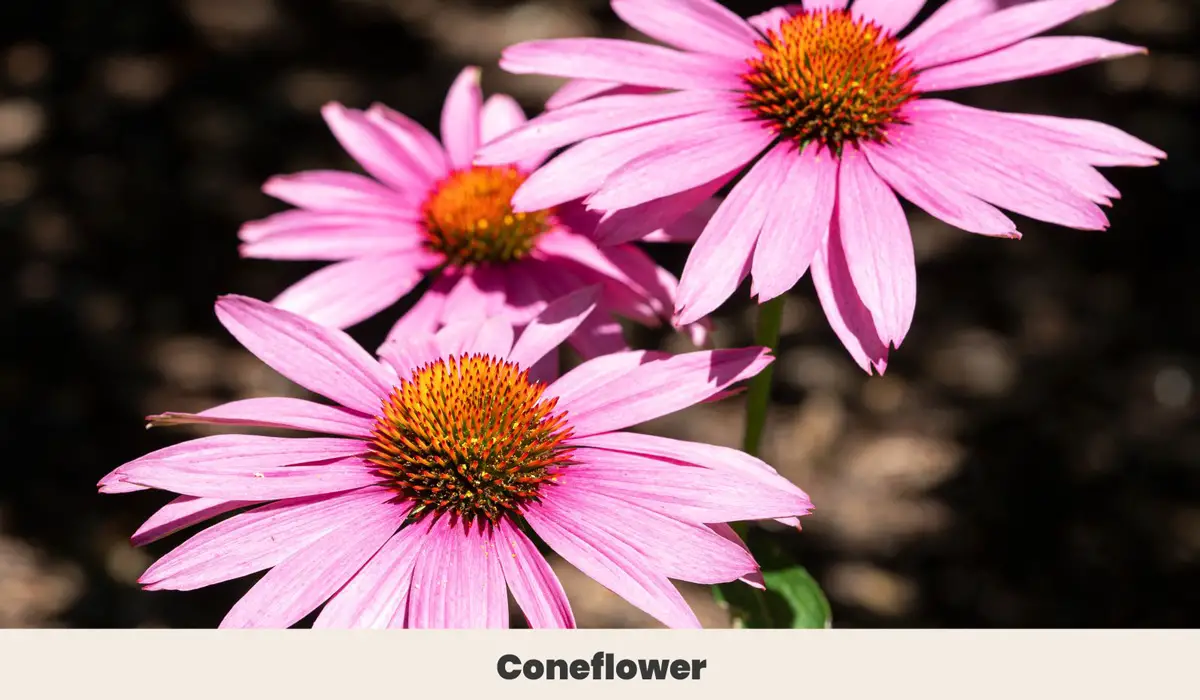
Coneflowers, also known as echinacea, are a popular and easy-to-grow perennial flower that produces showy blooms in shades of pink, purple, and white. They’re also known for their medicinal properties and are often used to boost the immune system and relieve cold symptoms. Coneflowers are a great addition to any garden.
| Botanical Name: | Echinacea Purpurea |
| Growth Rate: | 2-5 feet |
| Native Range: | Central and eastern North America |
| Hardiness Zones: | 3-9 |
| Exposure: | Full sun to partial shade |
| Soil Needs: | Well-drained soil with moderate fertility |
| Water needs: | Average watering needs, can tolerate drought once grown |
2. Perennial Tickseed (Coreopsis)
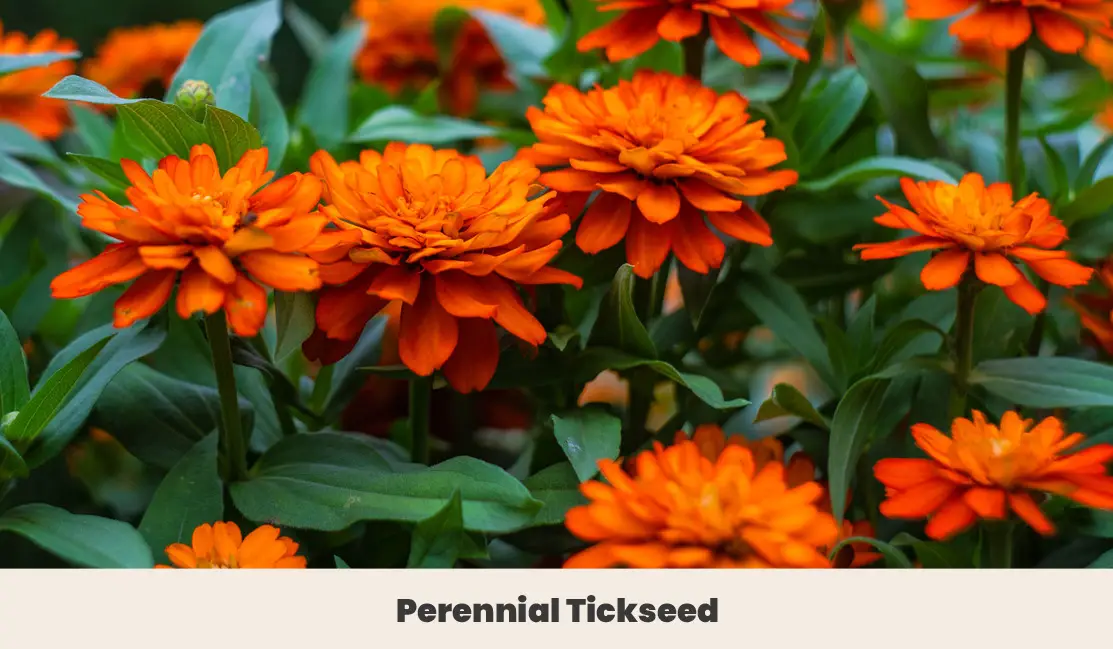
Perennial Tickseed, also known as Coreopsis, is a bright and cheery addition to any garden. With its daisy-like blooms and a wide range of colors, it can bloom from early summer until fall. It’s easy to care for and attracts bees and butterflies, making it a perfect choice for a pollinator garden.
| Botanical Name: | Coreopsis verticillata |
| Growth Rate: | 1-2 feet |
| Native Range: | North America |
| Hardiness Zones: | 4-9 |
| Exposure: | Full sun to partial shade |
| Soil Needs: | Well-drained soil with low to moderate fertility |
| Water needs: | Average |
3. Butterfly Pea (Clitoria ternatea)
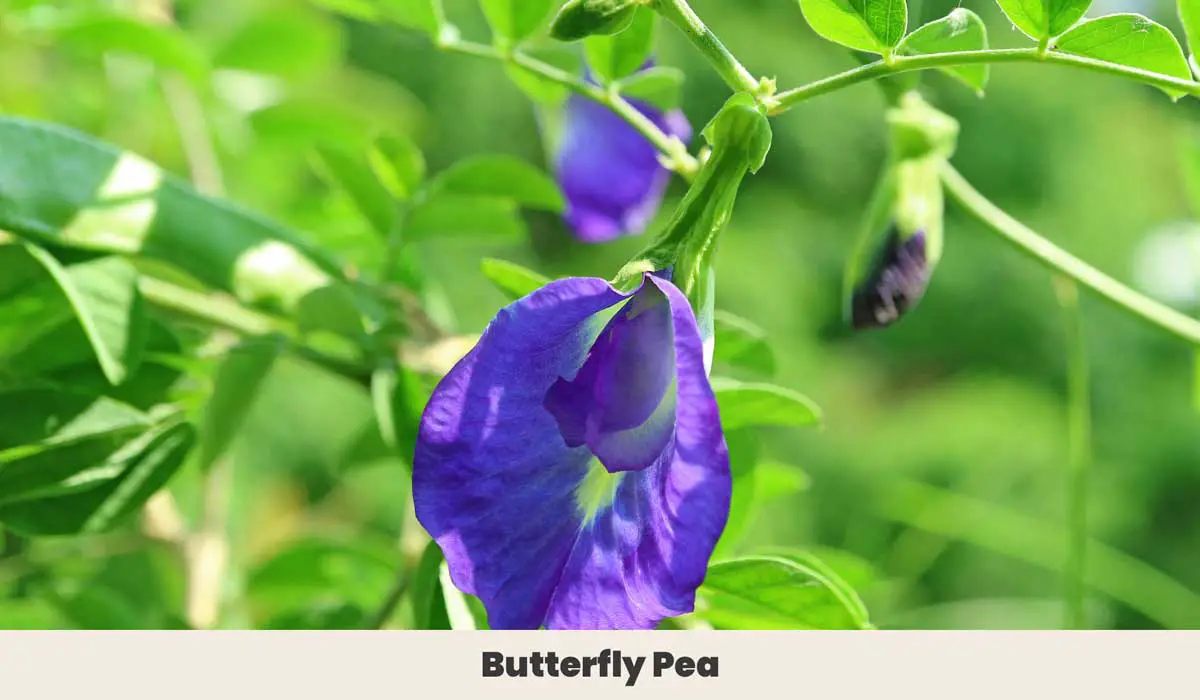
Butterfly Pea is a stunning tropical plant that produces vibrant blue and purple flowers. Its unique shape and color make it a favorite among gardeners and butterfly enthusiasts.
In addition to its beauty, it has a unique quality that gardeners could use to their advantage. When the petals are placed in acidic water, they change in color from blue to purple. You can use Butterfly pea petals to test the pH of your garden water or soaked soil.
| Botanical Name: | Clitoria Ternatea |
| Growth Rate: | 10 feet |
| Native Range: | Tropical Asia |
| Hardiness Zones: | 9-11 |
| Exposure: | Full sun to partial shade |
| Soil Needs: | Well-draining soil with a pH between 6.0 and 7.5 |
| Water needs: | Regular watering, but avoid overwatering |
4. Black-Eyed Susan (Rudbeckia hirta)
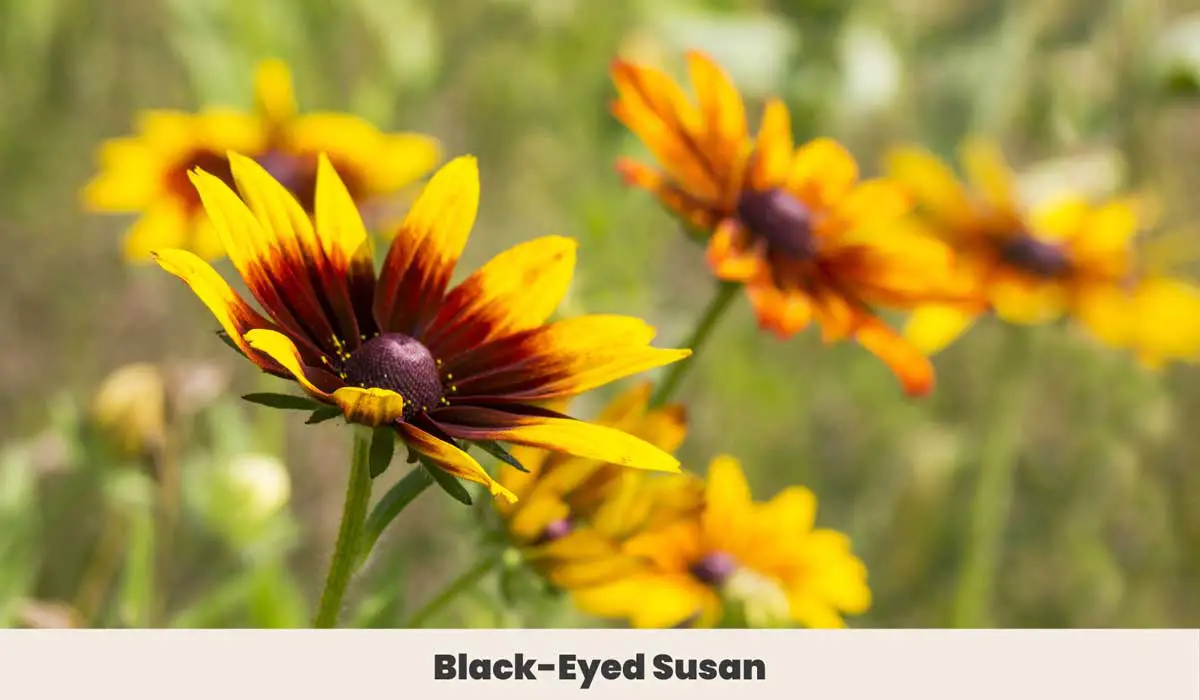
With its bright yellow petals and dark center, the black-eyed Susan is a cheerful addition to any garden. This native North American wildflower blooms from midsummer to fall, attracting pollinators and providing food for birds. It’s also drought-tolerant and low maintenance, making it an excellent choice for beginner gardeners.
| Botanical Name: | Rudbeckia Hirta |
| Growth Rate: | 2-3 feet |
| Native Range: | North America |
| Hardiness Zones: | 3-9 |
| Exposure: | Full sun exposure to light shade |
| Soil Needs: | Well-drained soil with a pH of 6.0 to 7.5 |
| Water needs: | Occasional |
5. Bridal Wreath (Spiraea prunifolia)
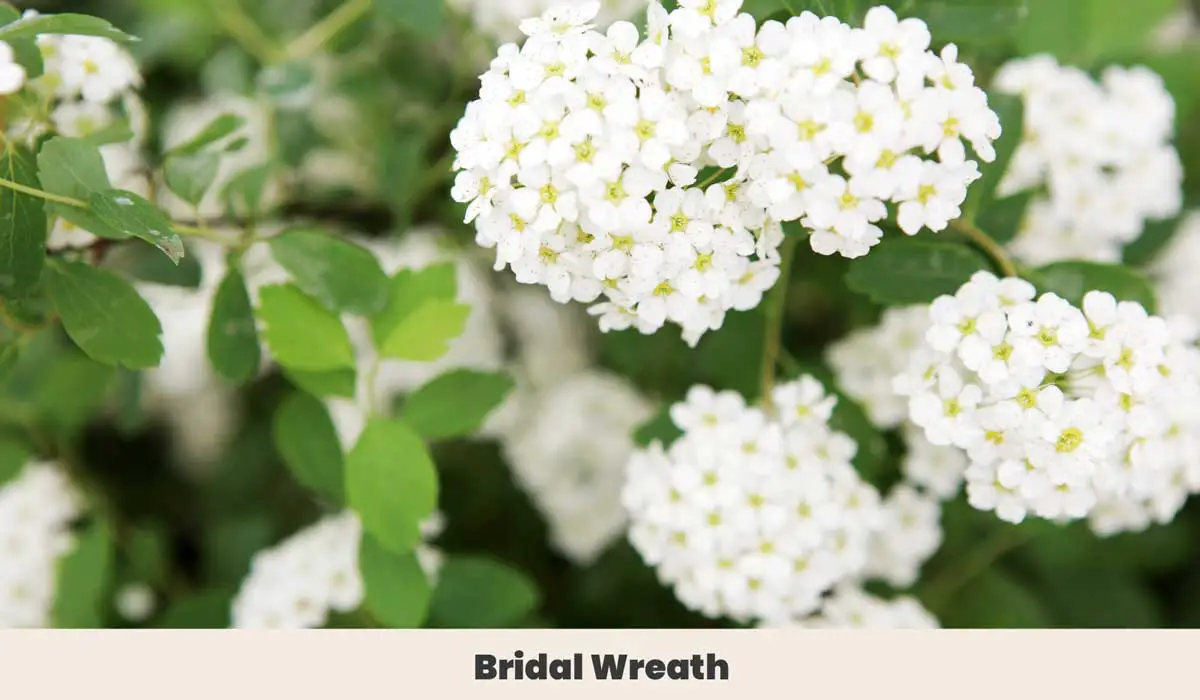
Bridal Wreath is a popular deciduous shrub that produces stunning clusters of white flowers in spring. It can grow up to 8 feet tall and 10 feet wide, making it a great focal point in any garden. Its arching branches create a graceful and elegant appearance, making it perfect for weddings and other special occasions.
| Botanical Name: | Spiraea prunifolia |
| Growth Rate: | 6-8 feet |
| Native Range: | Eastern Asia |
| Hardiness Zones: | 4-8 |
| Exposure: | Full sub-exposure |
| Soil Needs: | Well-drained soil with a pH of 5.5 to 7.5 |
| Water needs: | Occasional watering |
6. Harlequin Glorybower (Clerodendrum trichotomum)
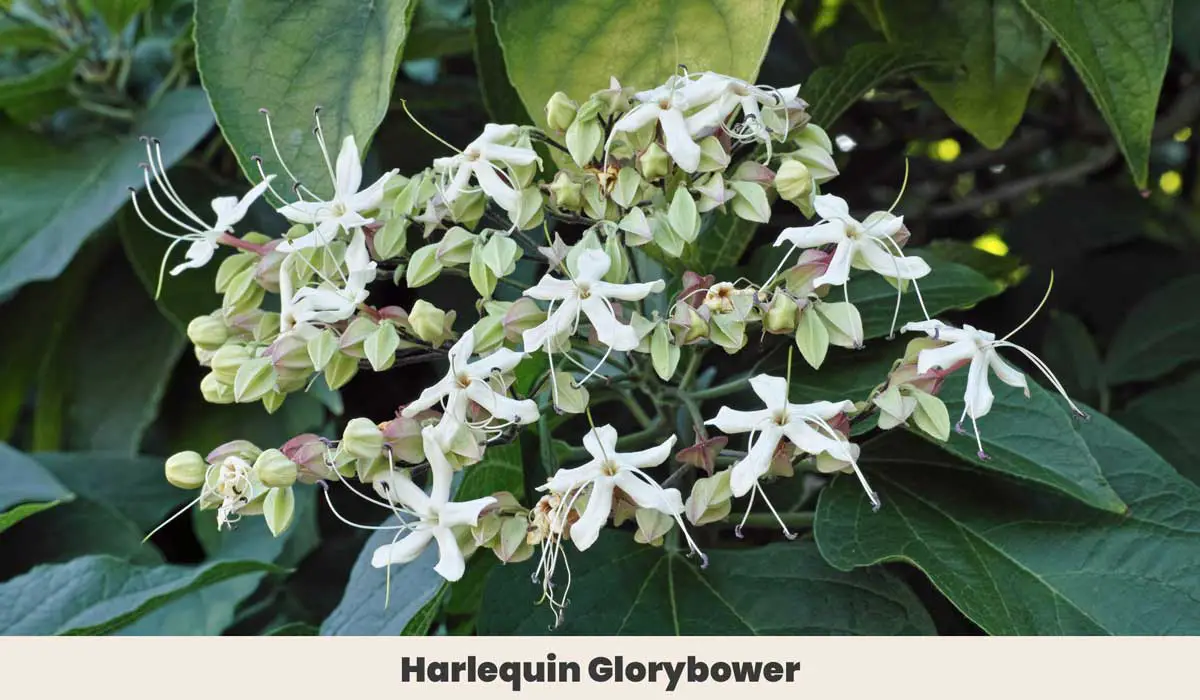
Harlequin Glorybower is a showy flowering plant that produces clusters of bright purple, tube-shaped blooms in the late summer. It’s native to East Asia and can grow up to 20 feet tall in the right conditions. It prefers full sun to partial shade and well-draining soil.
| Botanical Name: | Clerodendrum trichotomum |
| Growth Rate: | 10-15 feet |
| Native Range: | China, Korea, Japan |
| Hardiness Zones: | 5-9 |
| Exposure: | Full sun to partial shade |
| Soil Needs: | Well-drained |
| Water needs: | Regular watering |
7. Brazillian Dwarf Morning-glory, Blue daze (Evolvulus glomeratus)
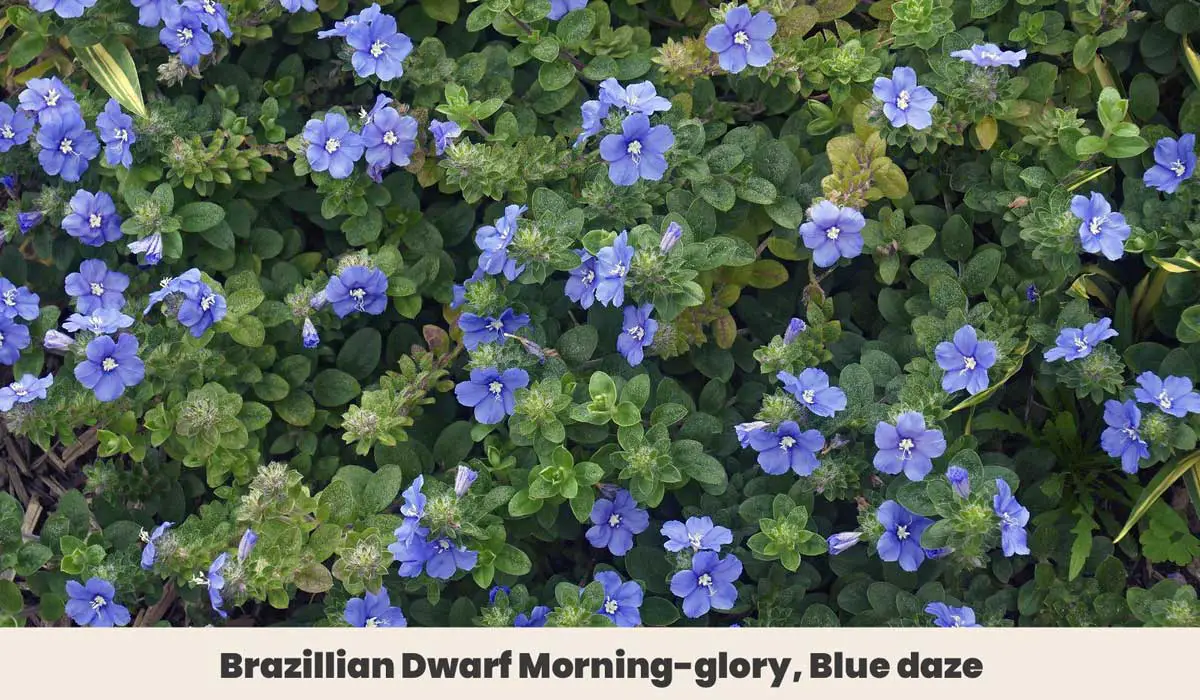
Blue daze plant is native to South America and boasts stunning blue flowers that bloom all summer long. It’s easy to grow and requires minimal care, making it an excellent choice for busy gardeners. Plus, it attracts butterflies and other pollinators to your garden, adding to its beauty and ecological value.
| Botanical Name: | Evolvulus glomeratus |
| Growth Rate: | 9-18 inches |
| Native Range: | South America |
| Hardiness Zones: | 8-11 |
| Exposure: | Full sun |
| Soil Needs: | Well-drained soil |
| Water needs: | Moderate |
8. Blanket flower (Gaillardia spp.)
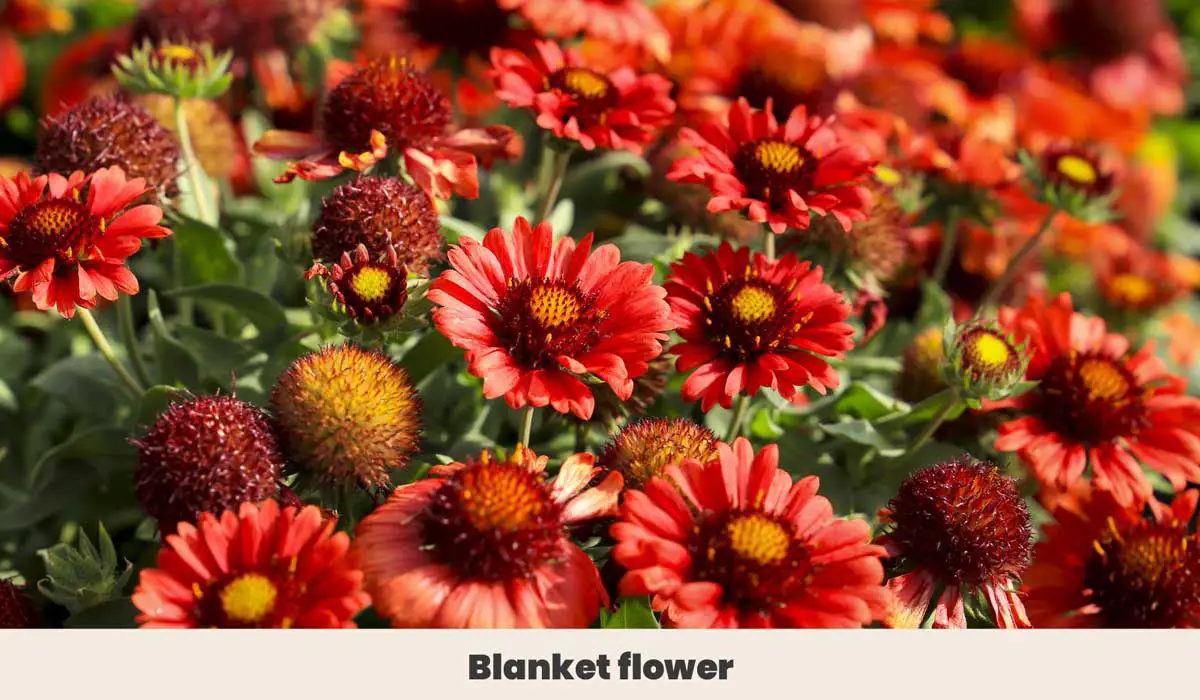
The Blanket Flower, also known as Gaillardia, is a drought-tolerant plant that produces striking red and yellow flowers. It’s easy to grow and attracts pollinators, making it a great choice for eco-conscious gardeners.
my pick for cold hardy gardens
I love blanket flowers, don’t let their fiery blooms fool you. They are hardy all the way down to USDA zone 3. They also have an extremely long bloom time from spring to fall with deadheading old flowers. For these reasons, they make the top of my list for cold hardy flowers that bloom year round.
Their warm and fiery flowers bloom all summer long and require minimal care. If you’re a busy gardener try growing blanket flowers in your low-maintenance garden.
| Botanical Name: | Gaillardia spp. |
| Growth Rate: | 1-2 feet |
| Native Range: | North and South America |
| Hardiness Zones: | 3-10 |
| Exposure: | Full sun |
| Soil Needs: | Well-drained soil |
| Water needs: | Deep watering |
9. Hibiscus (Hibiscus spp.)
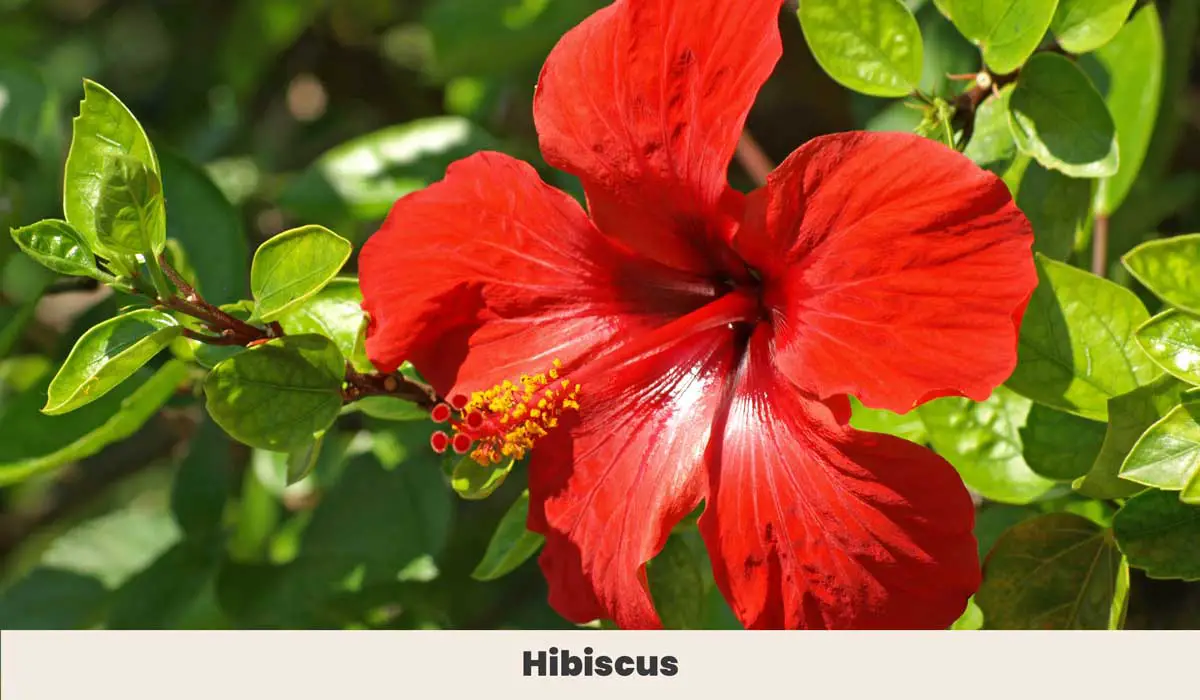
Hibiscus is a stunning flowering plant that comes in a variety of colors and sizes. It’s easy to grow and thrives in warm weather. The plant produces large, showy blooms that add a pop of color to any garden. Plus, it’s attractive to butterflies and hummingbirds, making it a great addition to any pollinator garden.
| Botanical Name: | Hibiscus spp. |
| Growth Rate: | 3-6 feet |
| Native Range: | Tropical and subtropical regions |
| Hardiness Zones: | 5-11 |
| Exposure: | Full sun to partial shade |
| Soil Needs: | Moist, well-drained soil |
| Water needs: | Regular watering |
10. Ixora (Ixora spp.)
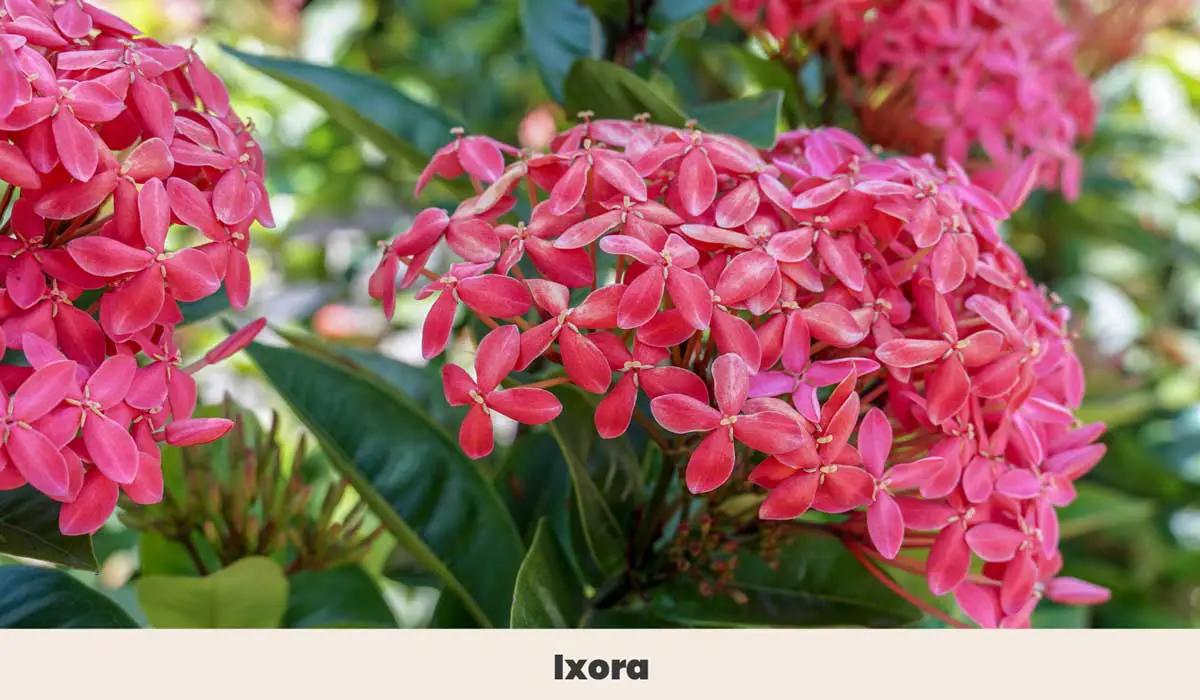
Ixora is a tropical evergreen shrub with striking clusters of tiny, star-shaped flowers that come in bright colors like pink, orange, and red. It’s a low-maintenance plant that thrives in warm and humid weather, making it perfect for tropical and subtropical gardens. It’s also attractive to butterflies and hummingbirds.
| Botanical Name: | Ixora spp. |
| Growth Rate: | 3-6 feet |
| Native Range: | Southeast Asia, South Pacific |
| Hardiness Zones: | 9-11 |
| Exposure: | Full sun to partial shade |
| Soil Needs: | Moist, well-drained acidic soil |
| Water needs: | Regular watering |
11. Lantana (Lantana spp.)
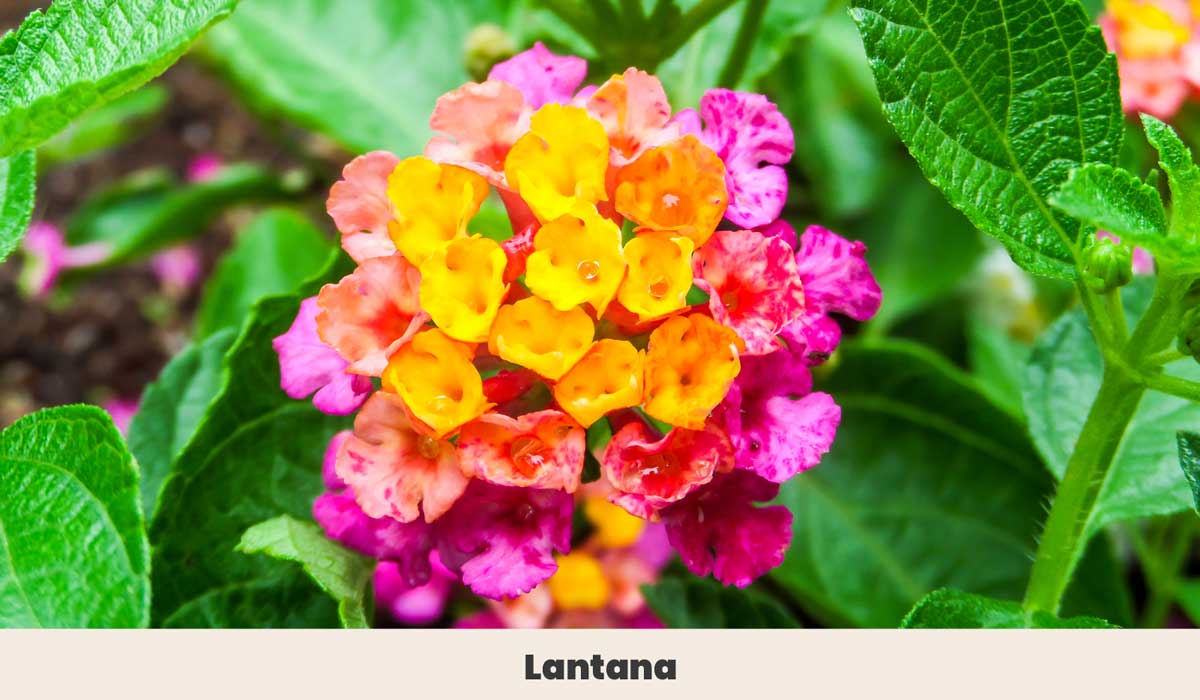
Lantana is a beautiful flowering plant that produces clusters of tiny blooms in a variety of colors, including pink, yellow, orange, and purple. It’s a hardy plant that thrives in warm weather and attracts pollinators like butterflies and bees. Plus, it’s low-maintenance and easy to grow, making it perfect for busy gardeners.
best for tropical gardens
If you live in a warm tropical climate then the vibrant Lantana flower is perfect for you. While in colder regions the Lantana will bloom from spring to frost, in tropical zones you can expect flowers throughout the whole year.
| Botanical Name: | Lantana Camara |
| Growth Rate: | 2-6 feet |
| Native Range: | Tropical America |
| Hardiness Zones: | 8-11 |
| Exposure: | Full sun to partial shade |
| Soil Needs: | Well-drained soil |
| Water needs: | Moderate to low |
Final Thoughts
With these 11 plants that bloom all year round, you can now enjoy the beauty of flowers and colors in their gardens throughout the year. Whether you live in a region with mild winters or harsh winters, there is a plant suitable for your garden. These plants not only add beauty to your outdoor space but also attract birds, bees, and butterflies, creating a thriving ecosystem. So, choose your favorite year-round blooming plant and create a garden that is always in full bloom!
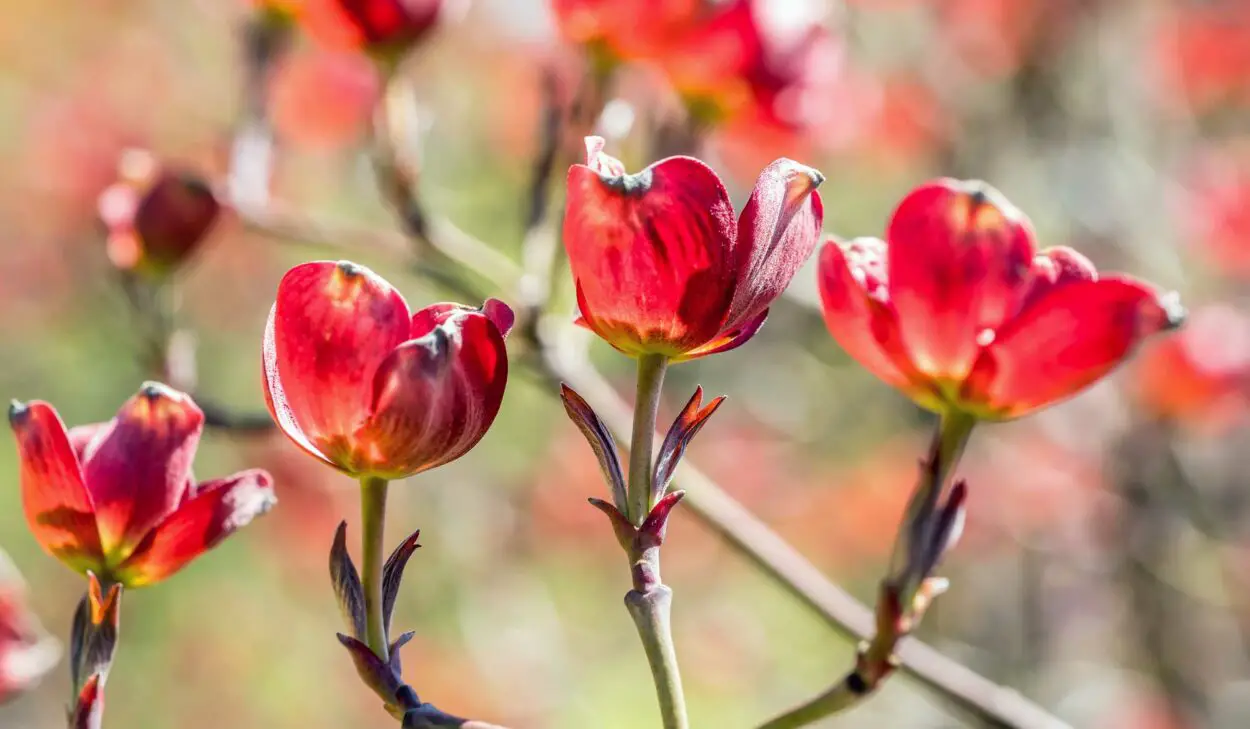
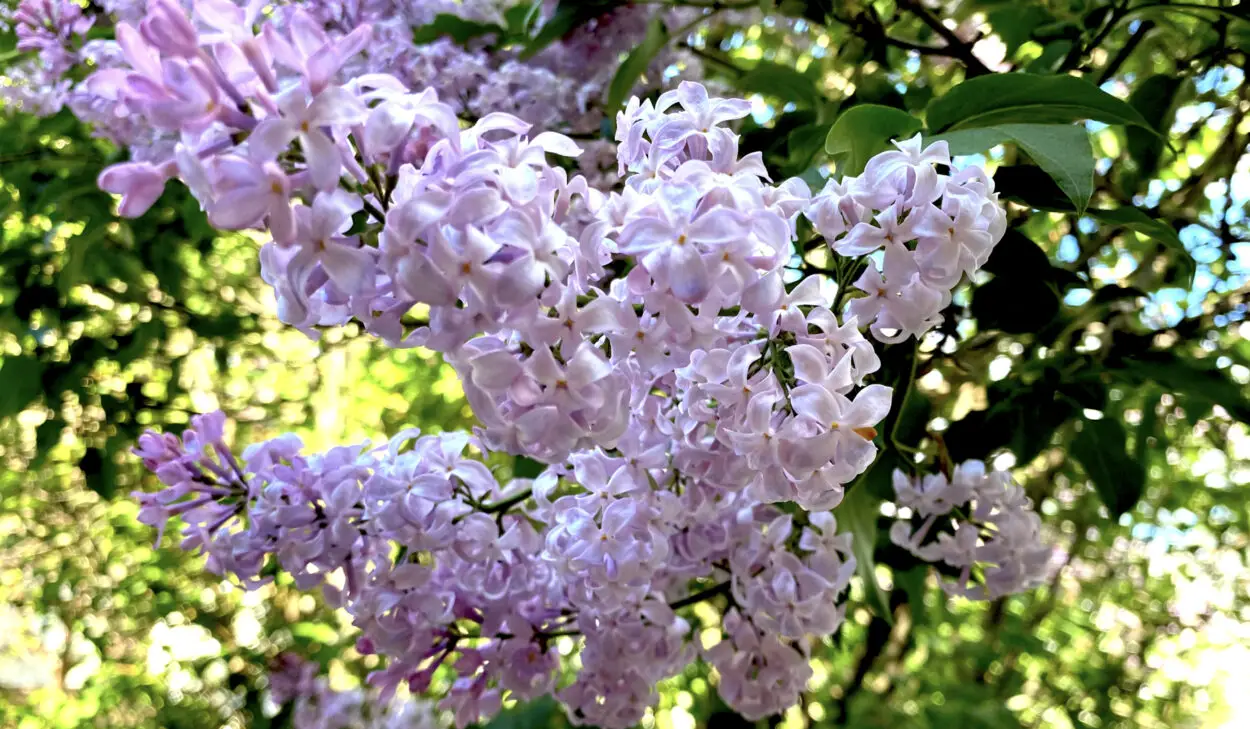
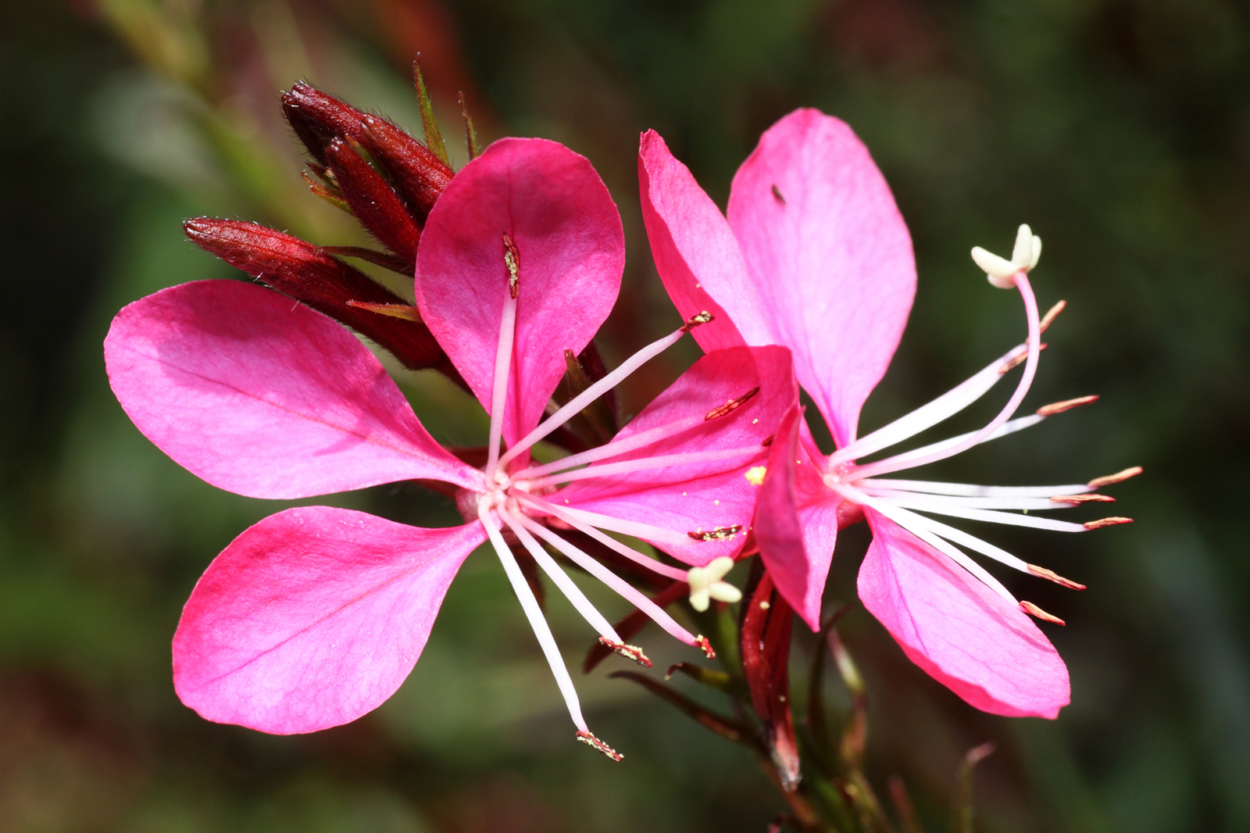
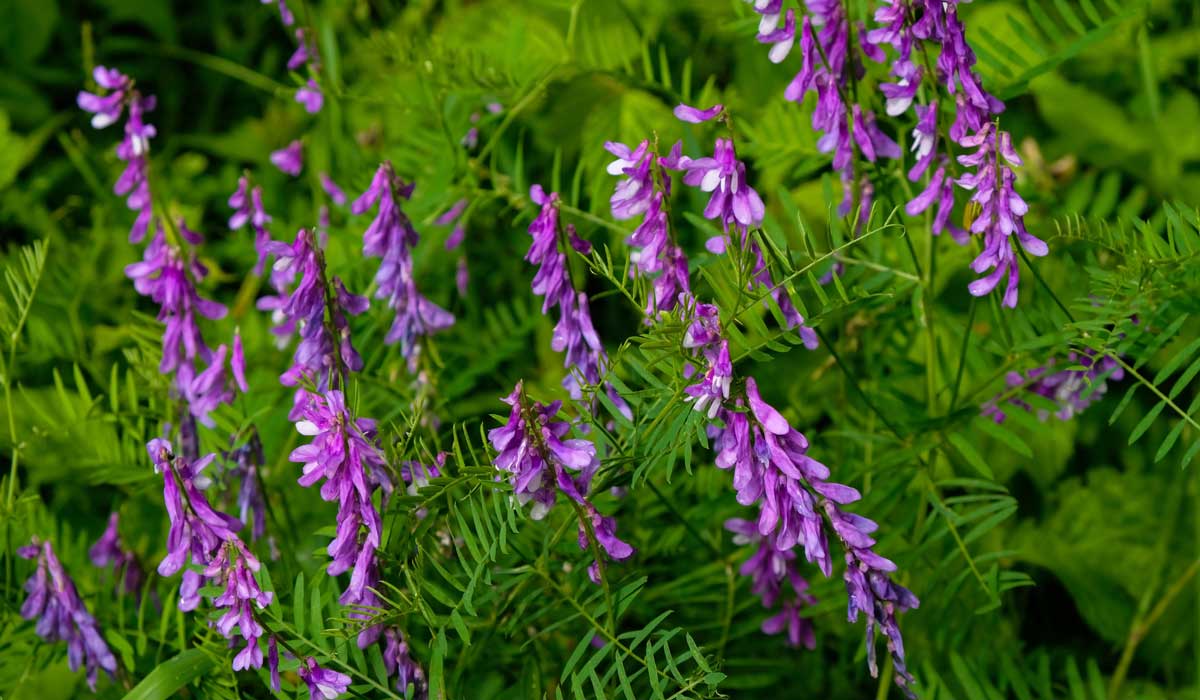
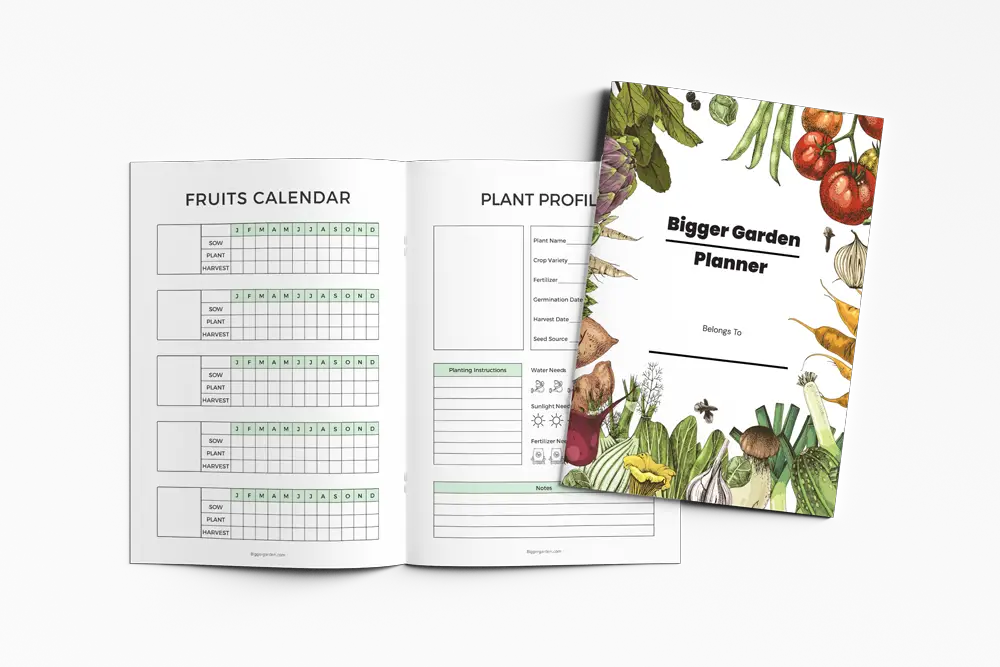
Great Info
Thanks Jeri!